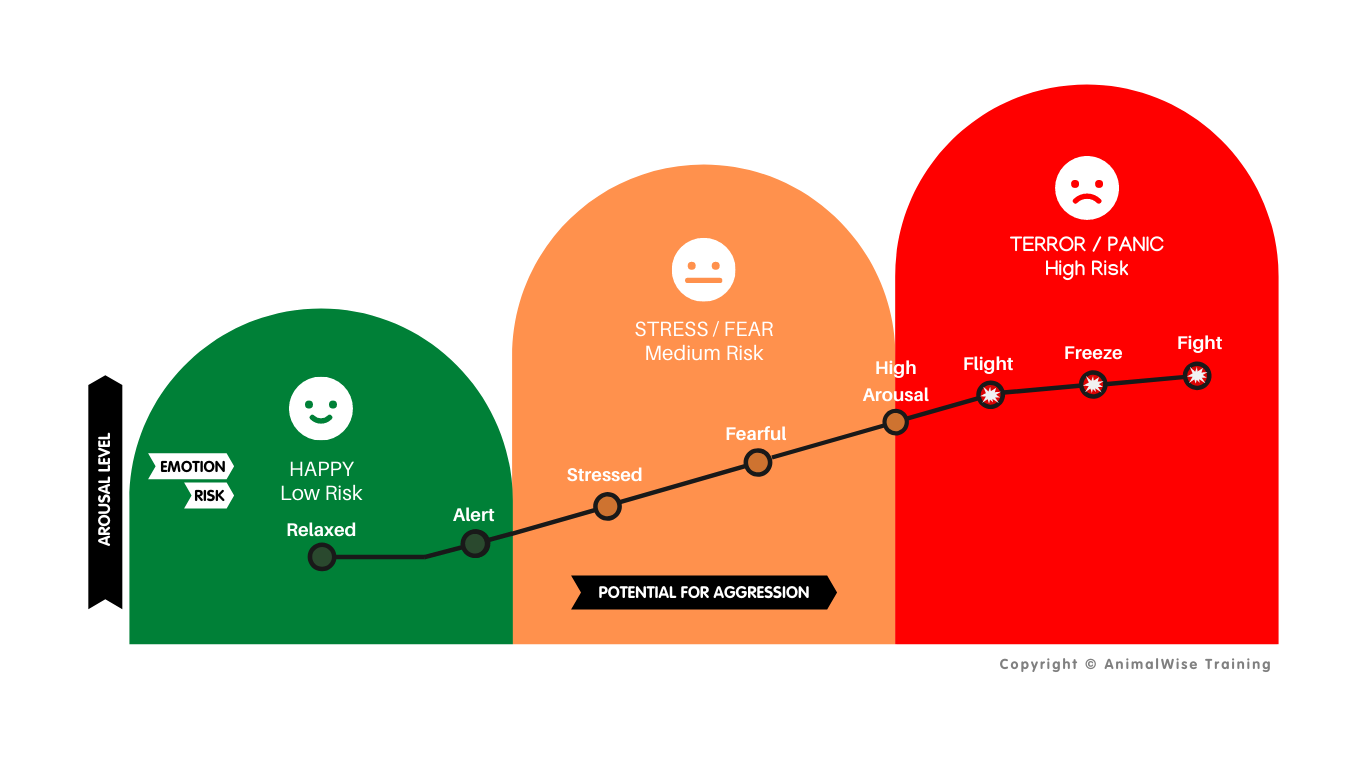Working with animal emotions
Vet clinic teams deal with dogs and cats everyday who are experiencing many different emotions, from stress and fear, to high arousal and panic. The Emotions Escalator graph shows the relationship between an animal’s emotional state and arousal level, and its potential for aggression. As the arousal level increases, so too does its potential for aggression. And as the animal moves up the scale, the risk to us as handlers increases. Relaxed and alert “green zone” animals tend to be easy and safe to manage and handle, but as we move up into the stressed and fearful “orange zone” things start to get a bit trickier!
The Emotions Escalator

“Less is more” is a common phrase you hear in vet clinics in relation to handling and restraint of dogs and cats. The more you restrain, the more fearful and resistant the animal often becomes, and then it feels necessary to use additional restraint to stay safe and get the job done. It’s a slippery slope! This situation becomes even more dangerous when the animal you are dealing with enters the “red zone” and are in the flight, freeze or fight response.
Do you know how to handle orange and red zone dogs and cats?!
So what are the safest and lowest stress ways to actually handle dogs and cats in the orange and red zones? Does your clinic have the right protocols and equipment? Join one of our animal handling courses for vet teams to find out!
Find out More
